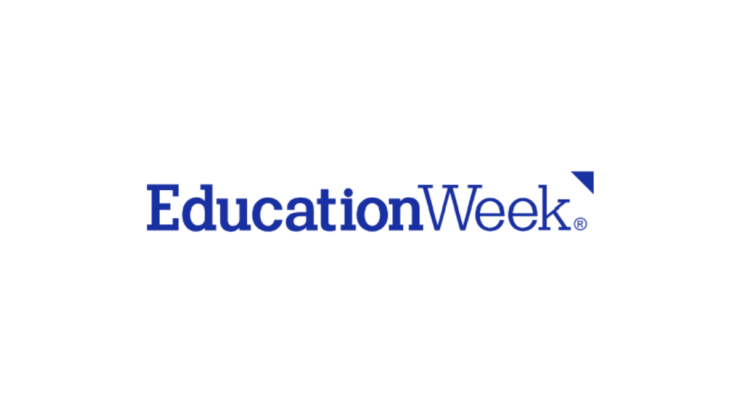School Choice In a Nutshell:
Every student should be able to choose from every educational option. No student in America should be denied opportunities to learn based on where they live or how much money their family makes. Many call this “school choice” but I like to call it education freedom.
In Depth:
“My vision for American education is to ensure that all children have the freedom to learn in their own way. It’s to give parents freedom to find the best option and fit for their children.”
Betsy DeVos
Freedom is what defines America. It’s what makes us different from countries that don’t enjoy the bounty and the blessings that we do.
But our government-run educational system is devoid of freedom. Your child is assigned to a school based on where you live, and it’s hard to change to a different one – unless you can afford to buy your way out. Schools teach what they want, not what you want or what the community might need. Teachers are trapped in a system that rewards longevity over productivity.
Education freedom starts from the premise that every student is unique and every student learns differently. This is something every parent knows. Yet we have a government-run school system that essentially treats children as if they were all the same—moving kids from grade to grade based on age, following an agrarian calendar, and forcing children to learn each subject at the same pace at the same time.
Hear the incredible, life-changing stories of teachers, parents, and who are empowered to find their fit:
Education freedom is about giving every single family in America the power and the resources to decide where, when, and how they will educate their children. It’s about unlocking the full array of educational choices so every student can find their best fit. It’s about funding individual students, not the school buildings or systems. It’s about the thousands of not yet imagined ways students of all ages can learn, achieve their full potential, and fulfill their purpose.
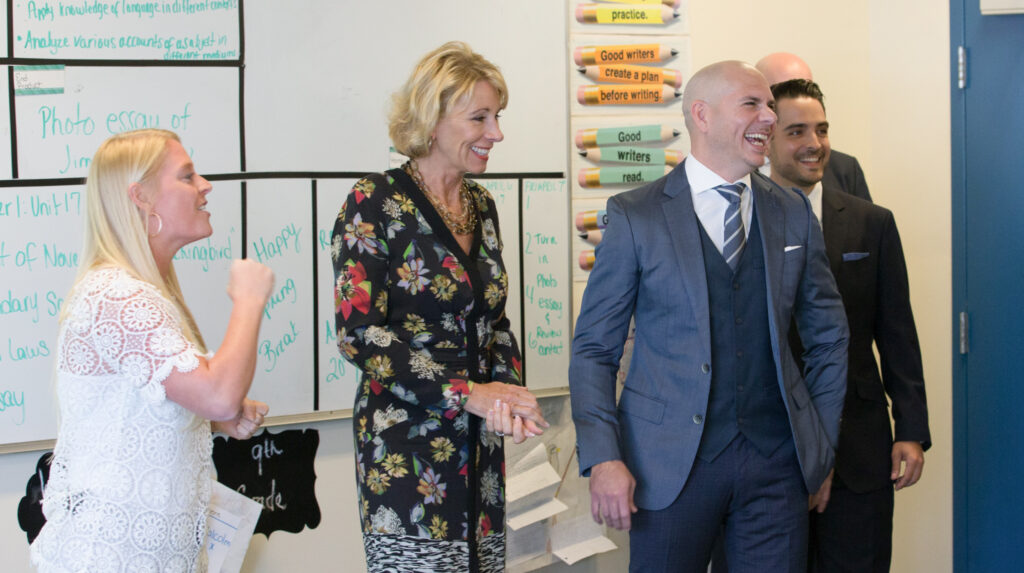
When America truly embraces education freedom, American education will be bustling. It’ll be dynamic. It’ll be innovative. Adaptive. Personalized. Relevant. And our students will be number one in the world. There’s a reason education freedom is spreading right now across the country from Illinois to Florida and New Hampshire to Nevada. Education freedom changes lives.
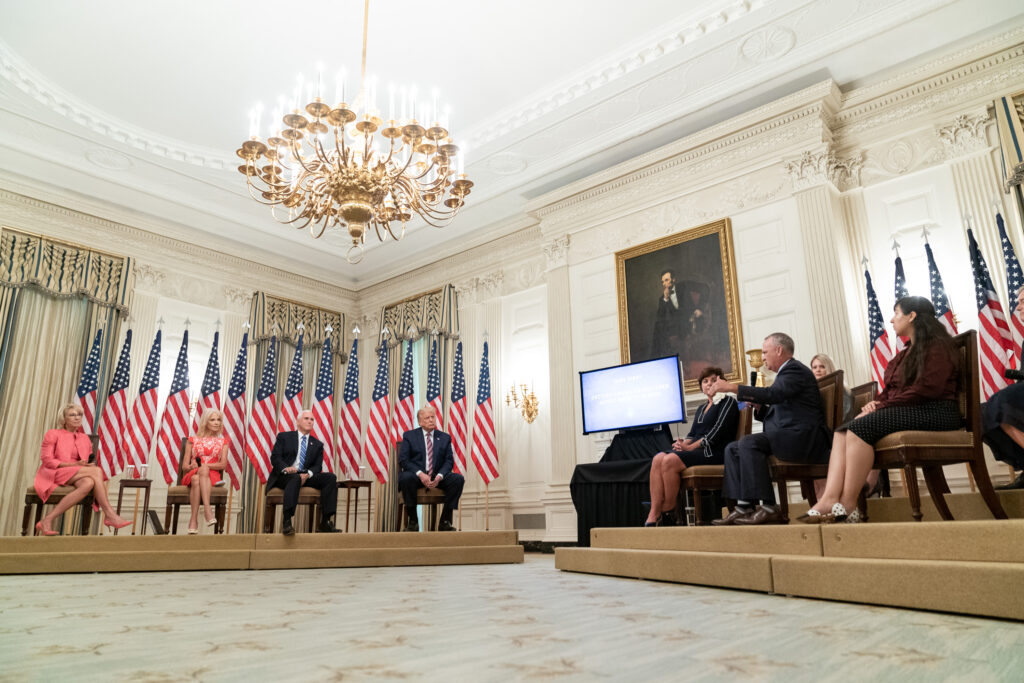
Education freedom is pro-student and pro-family. It isn’t anti-anything, including anti-public school. Education freedom is not about buildings—it’s not a false choice between one type of school building over another. Instead, education freedom is bigger than that. It’s about the thousands of not yet imagined ways students of all ages can learn, achieve their full potential, and fulfill their purpose.
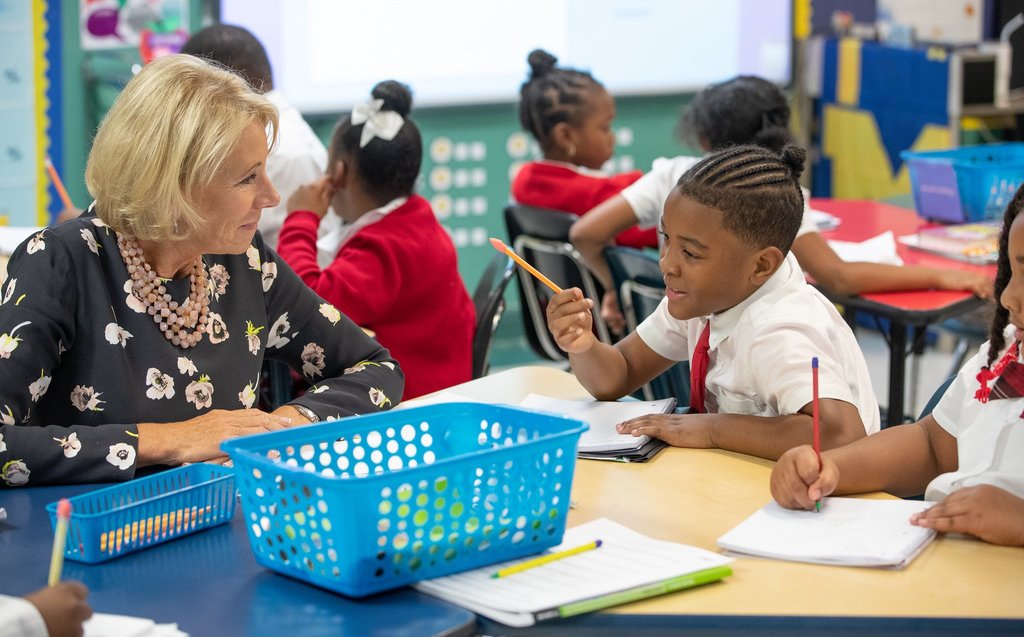
What is School Choice?
You may be more familiar with the concept of school choice. School choice is a key part of education freedom. School choice is the power to choose the right school for your child, not just accept the one the government assigns to you. That means if you want to send your child to a private school, a charter school, a different public school, home school, a faith-based school, a career-and-technical school, a virtual school, a microschool or a pod – any kind of learning environment that meets your child’s unique needs – the government funding already allocated for your child should go to that school with your child. I think of it like a backpack: no matter what kind of school the child heads to, everything he or she needs for the day goes in the backpack. The funding should be no different.
I use “education freedom” because “school choice” doesn’t capture this movement completely. It makes it sound like we’re simply talking about schools – buildings, infrastructure. It’s really something much bigger than that. For some families, it might just require picking a different school, but for other students, it might require a totally different approach to learning. Or a combination of several approaches to learning.
What Are Different School Choice Options?
It’s important to understand the various ways people can make education freedom work for them:
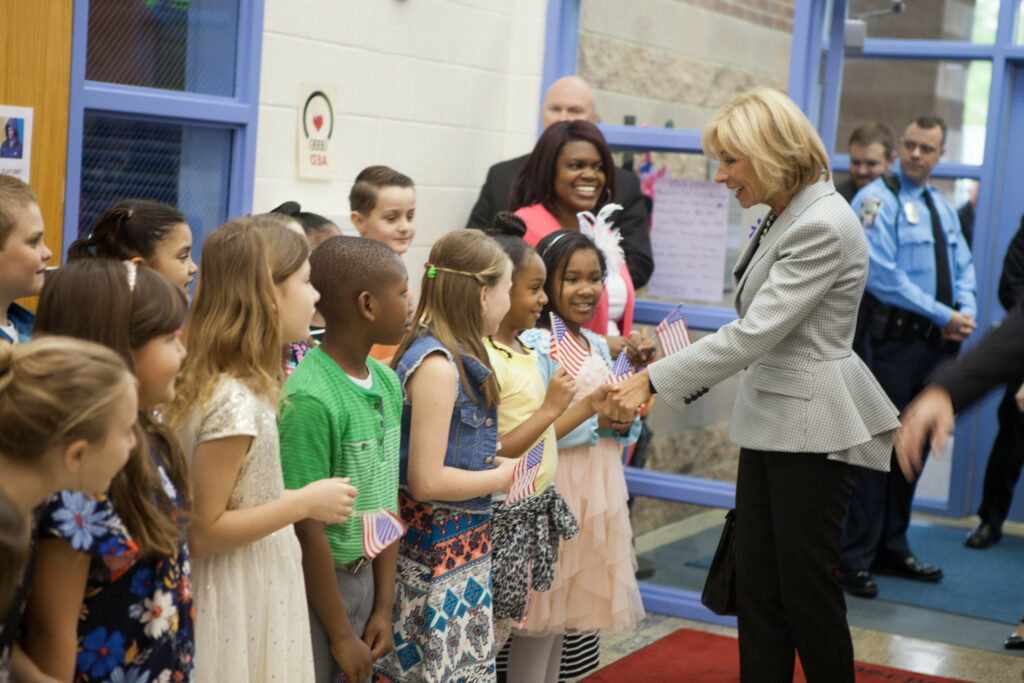
Public School Choice
Public school choice allows families to send their children to a different public school than their government-assigned or zoned school. Some states allow families to pick only from schools within the district where their home is, while others allow them to choose any school in their region or state. In both forms, most schools institute caps on how many non-assigned students they will accept.
Pictured: Betsy DeVos with students at Ashland Elementry School in Manassas, VA in April 2017
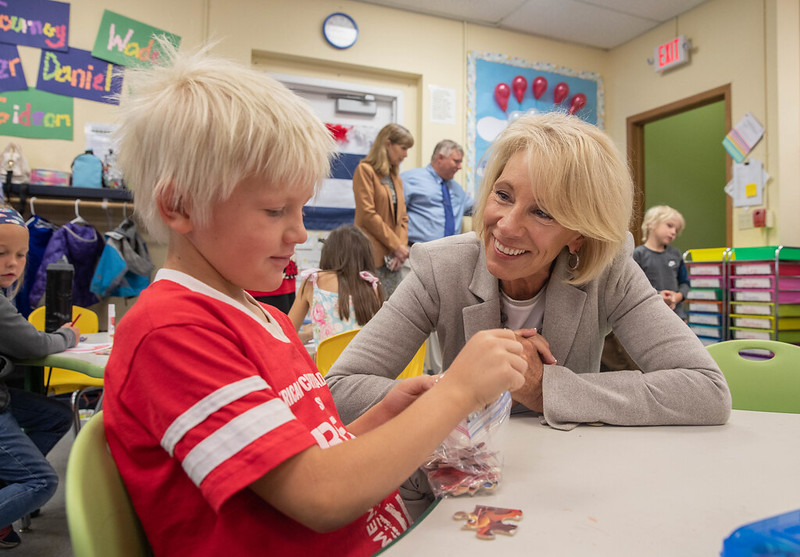
Public Charter Schools
A public charter school is, first and foremost, a public school. It is taxpayer-funded, tuition-free and open to anyone who wants to attend. There are usually many more students who want to attend charter schools than there is space to accommodate them, in which case an enrollment lottery occurs. Charter schools receive funding roughly the same way traditional assigned public schools do, though they usually receive less funding per student than those schools. The key difference is a charter school is independently run, freeing it from much of the burdensome school bureaucracy and some of the regulations. This autonomy makes room for more creativity and improved outcomes.
Pictured: Betsy DeVos with a student at the American Charter Academy in Mat-Su Valley in Alaska in 2019
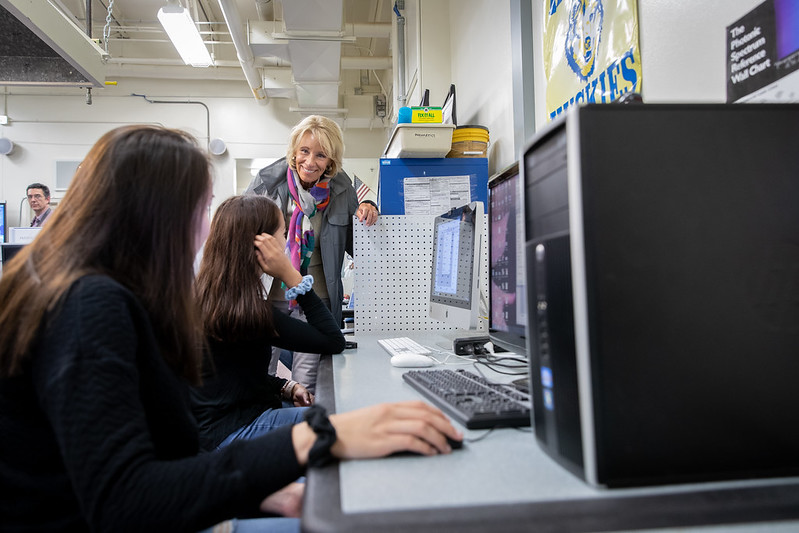
Magnet Schools
A magnet school is a public school structured around a theme or convening principle, like the STEM fields or the performing arts. Like charters, magnet schools are tuition-free public schools. However, magnet schools typically have enrollment criteria, like academic performance. In their earliest days, magnet schools were designed to help racially integrate public schools. The idea was simple: If families pick a school based on what it offers, not where it’s geographically located, kids will identify based on their shared interests, not their skin color. In this way, it was thought, magnet schools will naturally become integrated.
Pictured: Betsy DeVos at the Star of the Northwest Magnet School in Kotzebue, AK in 2019
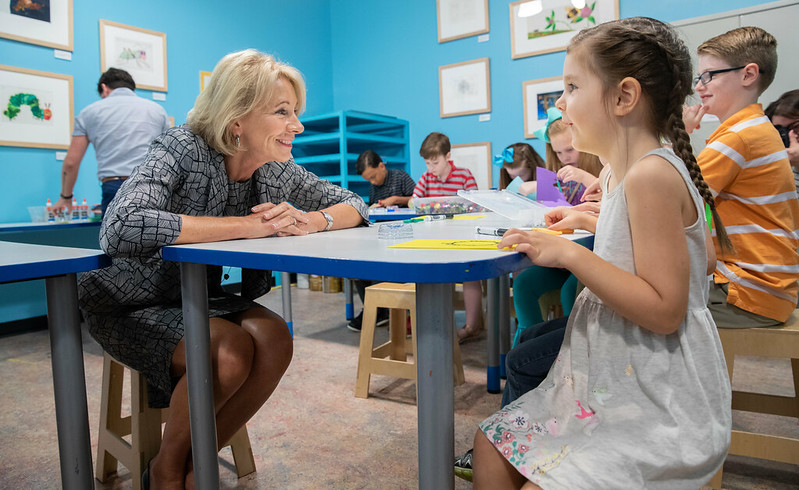
Homeschool
A homeschool is exactly what it sounds like: A school run at home. Parents use curriculum and experience-based learning to help their children learn. Increasingly, homeschooling involves multiple families working together to advance their children’s education, including going on field trips or meeting in a community venue to learn together. Families bear all the costs of this education option themselves.
Pictured: Betsy DeVos with a student at a home school event in Jackson, MA in
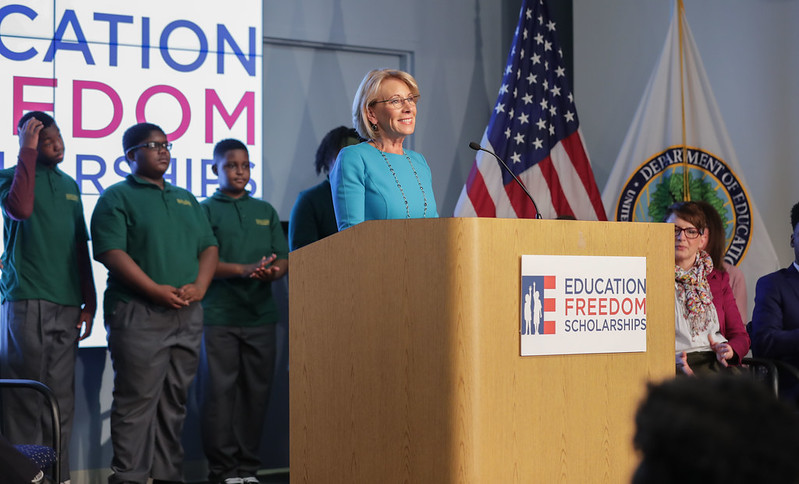
Tax Credit Scholarships
A tax credit scholarship involves a two-step process to facilitate students being able to choose a school for which they need to pay tuition. First, individuals or businesses make donations to an education nonprofit (501c3). To encourage more donors to participate, the contributions are treated like taxes paid. The taxes owed remains the same, but the donor can redirect a portion of their tax bill to help other people’s children choose a school that’s right for them. In the second step, the nonprofit organization that receives the donation provides scholarships to families so they can pick the right school for their children, including private schools. They usually have criteria for who can receive scholarships, most commonly they are families who have lower incomes. Some scholarship programs are designed to benefit students with disabilities or gifted and talented students.
Pictured: Betsy DeVos at the Education Freedom Scholarships kickoff event in 2019 at the U.S. Department of Education in Washington, DC
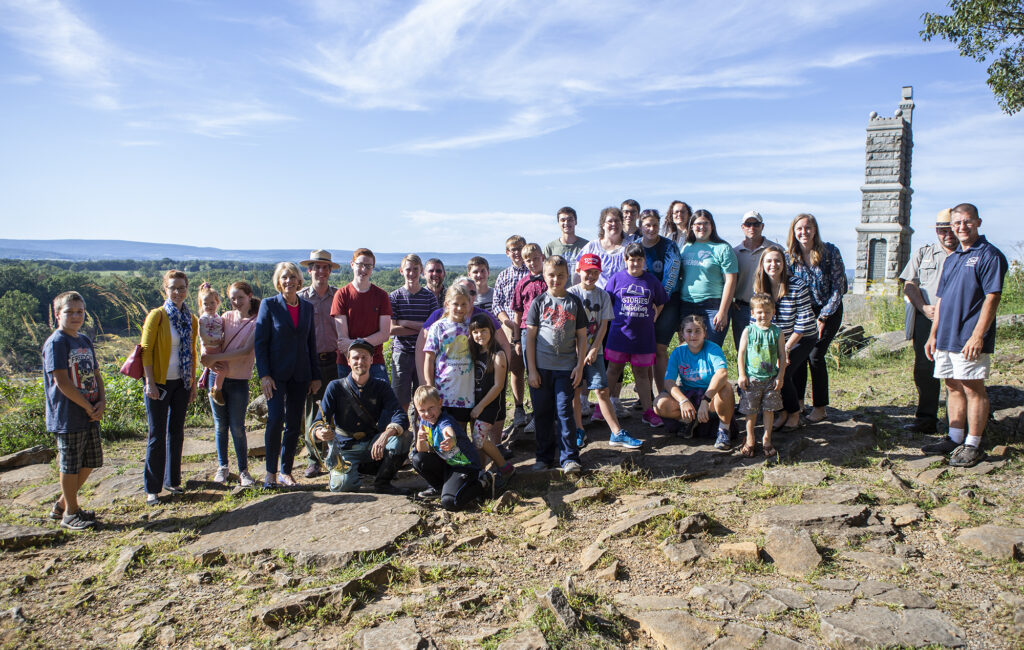
Education Savings Account (ESA)
An education savings account, or ESA, is the newest (and my favorite, thus far) mechanism to facilitate education freedom. With ESAs, funds for a child’s education are deposited into an account that a family can use to pay tuition and a variety of other education-related expenses. They maximize freedom of choice because families can use their ESAs at a variety of providers, thus “unbundling” or customizing school. ESAs can be funded by a government or by individuals who receive a tax credit for their donations.
Pictured: Betsy DeVos with homeschool families in Gettysburg, PA in 2019
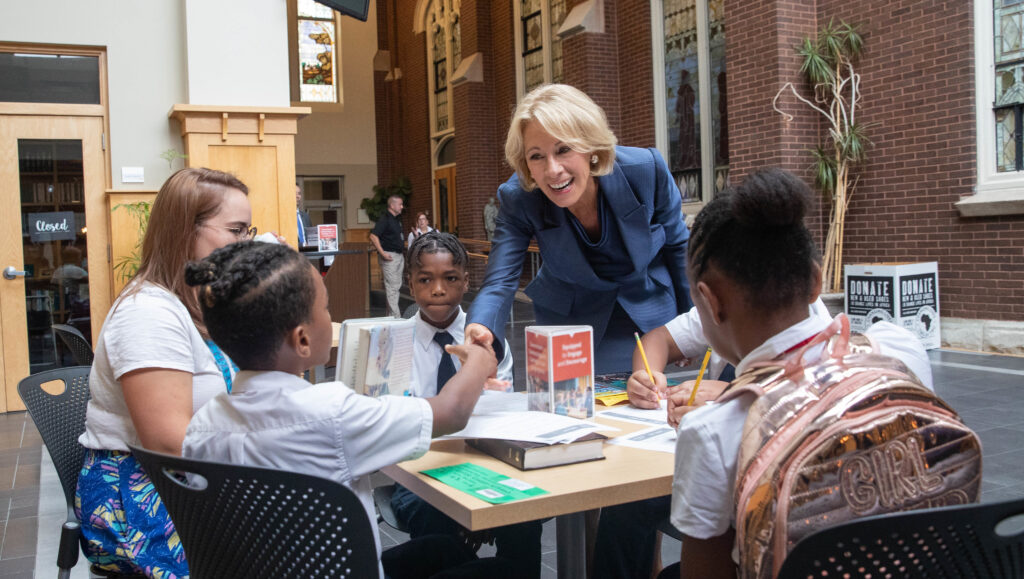
School Choice Vouchers
A voucher is direct payment from the government to a student for their education. The student can use the voucher to pay for education at any school of their choice. This works similarly to SNAP (food stamps) or housing vouchers.
Pictured: Betsy DeVos with students at St. Marcus Lutheran School in Milwaukee, WI during the Back to School Tour in September 2019.
The Latest in School Choice:
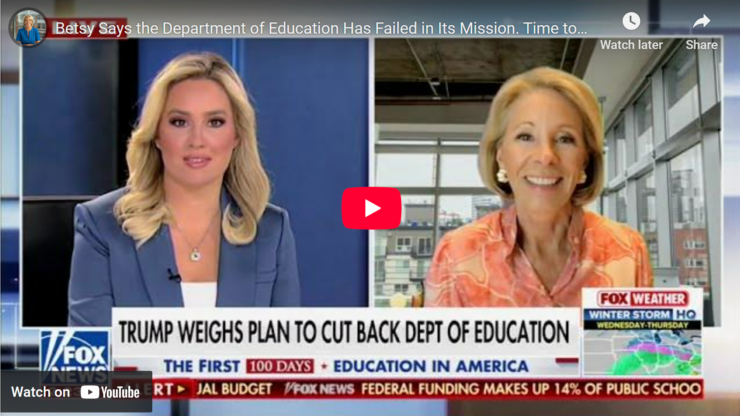
Fox News | Betsy Says the Department of Education Has Failed in Its Mission and It’s Time to Let Parents and States Lead
Feb 5, 2025

FOX BUSINESS | Varney & Co: The US must unlock education freedom, former Education Secretary Betsy DeVos says
Dec 13, 2024

Fox Business | Betsy Calls U.S. Department of Education a “Pay Off” to the Unions and Says It Needs to be Shut Down
Nov 13, 2024

Fox News | Betsy Says the Department of Education Has Failed in Its Mission and It’s Time to Let Parents and States Lead
Feb 5, 2025
FOX BUSINESS | Varney & Co: The US must unlock education freedom, former Education Secretary Betsy DeVos says
Dec 13, 2024
